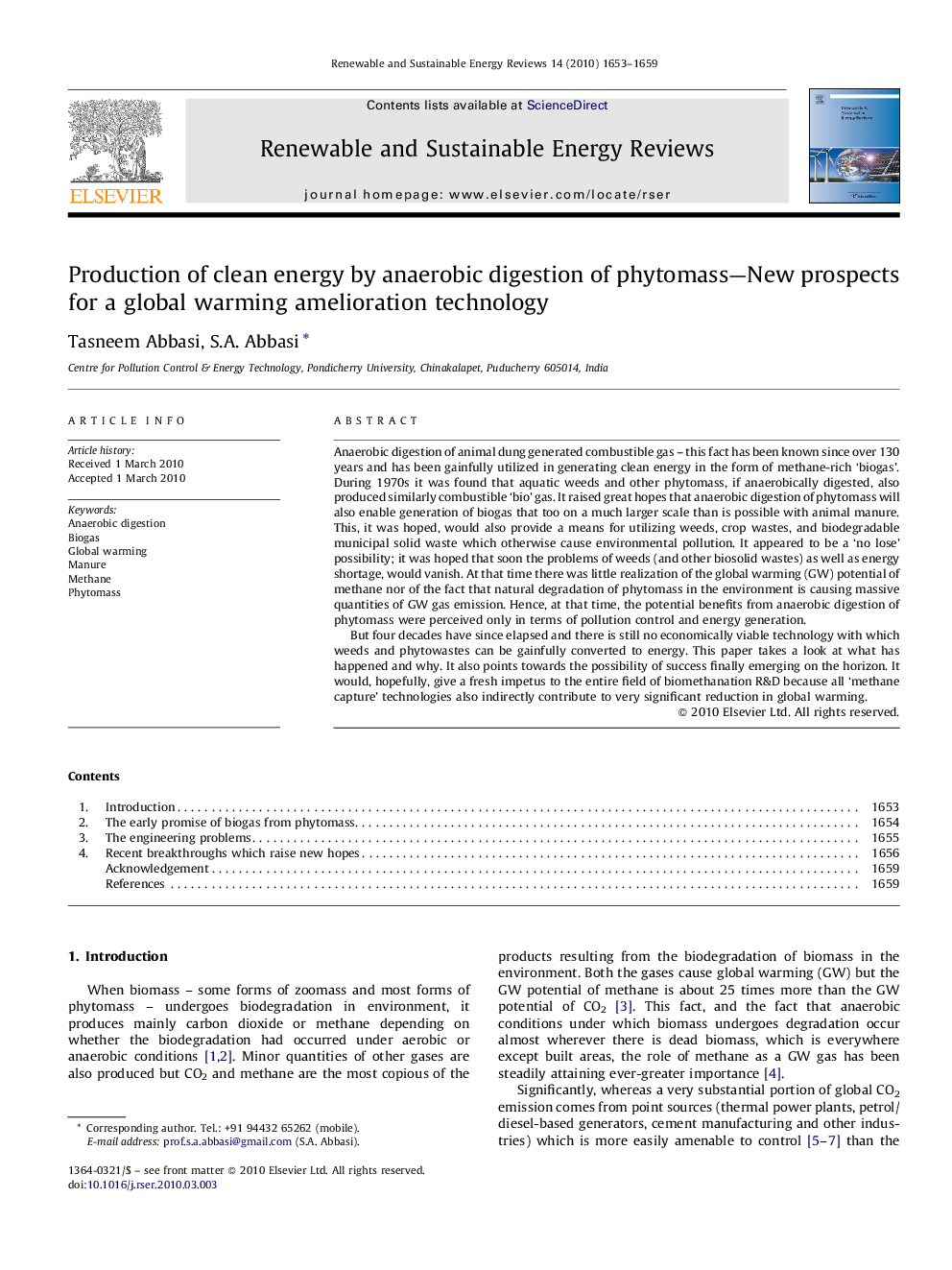| Article ID | Journal | Published Year | Pages | File Type |
|---|---|---|---|---|
| 1751623 | Renewable and Sustainable Energy Reviews | 2010 | 7 Pages |
Anaerobic digestion of animal dung generated combustible gas – this fact has been known since over 130 years and has been gainfully utilized in generating clean energy in the form of methane-rich ‘biogas’. During 1970s it was found that aquatic weeds and other phytomass, if anaerobically digested, also produced similarly combustible ‘bio’ gas. It raised great hopes that anaerobic digestion of phytomass will also enable generation of biogas that too on a much larger scale than is possible with animal manure. This, it was hoped, would also provide a means for utilizing weeds, crop wastes, and biodegradable municipal solid waste which otherwise cause environmental pollution. It appeared to be a ‘no lose’ possibility; it was hoped that soon the problems of weeds (and other biosolid wastes) as well as energy shortage, would vanish. At that time there was little realization of the global warming (GW) potential of methane nor of the fact that natural degradation of phytomass in the environment is causing massive quantities of GW gas emission. Hence, at that time, the potential benefits from anaerobic digestion of phytomass were perceived only in terms of pollution control and energy generation.But four decades have since elapsed and there is still no economically viable technology with which weeds and phytowastes can be gainfully converted to energy. This paper takes a look at what has happened and why. It also points towards the possibility of success finally emerging on the horizon. It would, hopefully, give a fresh impetus to the entire field of biomethanation R&D because all ‘methane capture’ technologies also indirectly contribute to very significant reduction in global warming.
